- News
- Reviews
- Bikes
- Components
- Bar tape & grips
- Bottom brackets
- Brake & gear cables
- Brake & STI levers
- Brake pads & spares
- Brakes
- Cassettes & freewheels
- Chains
- Chainsets & chainrings
- Derailleurs - front
- Derailleurs - rear
- Forks
- Gear levers & shifters
- Groupsets
- Handlebars & extensions
- Headsets
- Hubs
- Inner tubes
- Pedals
- Quick releases & skewers
- Saddles
- Seatposts
- Stems
- Wheels
- Tyres
- Tubeless valves
- Accessories
- Accessories - misc
- Computer mounts
- Bags
- Bar ends
- Bike bags & cases
- Bottle cages
- Bottles
- Cameras
- Car racks
- Child seats
- Computers
- Glasses
- GPS units
- Helmets
- Lights - front
- Lights - rear
- Lights - sets
- Locks
- Mirrors
- Mudguards
- Racks
- Pumps & CO2 inflators
- Puncture kits
- Reflectives
- Smart watches
- Stands and racks
- Trailers
- Clothing
- Health, fitness and nutrition
- Tools and workshop
- Miscellaneous
- Buyers Guides
- Features
- Forum
- Recommends
- Podcast
TECH NEWS
2014 WorldTour bikes: Katusha’s Canyon Ultimate, Speedmax + Aeroad
Canyon Bikes will provide two WorldTour teams for the 2014 season, joining Specialized as the only other manufacturer to supply multiple teams, having signed a deal with Movistar at the turn of the year. Katusha, the Russian-backed team, officially unveiled the team yesterday, showing the bikes and new kit for the first time. Here’s a close look at the bikes they’ll be racing.
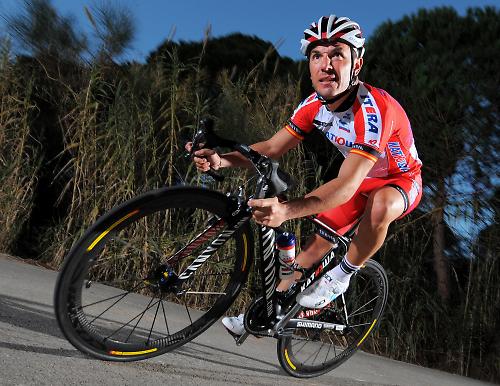
Katusha will have three bikes to choose from, the Ultimate CF SLX 9.0 and Aeroad CF 9.0 for road stages, and the Speedmax CF TT 9.0. The last one will obviously come out for time trials, but to choose between the Ultimate and Aeroad will come down to rider preference and the course of a particular stage or race. Sprinters and breakaway specialists will lean towards the Aeroad, while climbers and all-rounders will favour the lighter weight of the Ultimate.
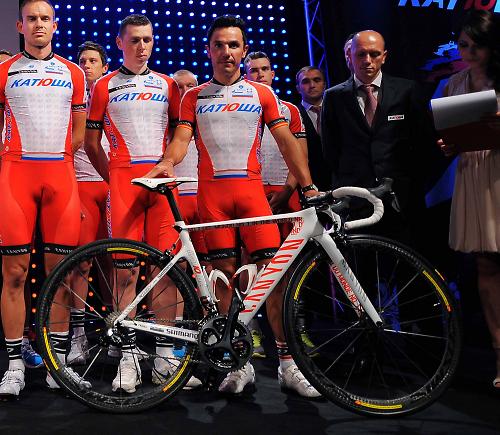
Joaquim Rodríguez finished the 2013 season as the sport's No.1 ranked rider in the UCI WorldTour rankings, a feat he is celebrating for the third time. That fact is celebrated on the top tube of this custom painted Canyon Aeroad.
These bikes head into the 2014 season unchanged from last year. It’s worth observing that of the three bikes, the Aeroad is perhaps the one that we suspect might be due for an update, if the regular update cycles favoured by most manufacturers is anything to go by. Aerodynamics is an area of bicycle design that has undergone a rapid pace development in the last couple of years, and one only needs to compare the Speedmax - first introduced this time last year - to the Aeroad, to see that the later is lagging behind in terms of cutting-edge aero design. We’ll have to wait and see.
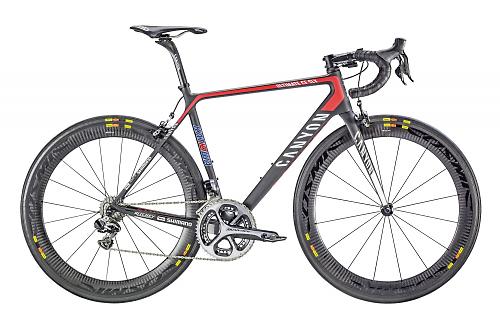
But we digress, let’s take a look at the bikes the team will start the season with. First, the Ultimate. It was released last year, a major update of the previous frame, with changes focused on making it lighter and stiffer. A large frame weighs a claimed 790g, which makes it one of the lightest frames in the peloton.
The tube profiles are all new compared to the previous model, with a distinctive flat sided head tube and down tube, carbon fibre dropouts and a press fit bottom bracket, all helping to save weight. And boost stiffness by a claimed 8%. Naturally, cables are all routed internally, as is the way with all top-end race-ready frames.
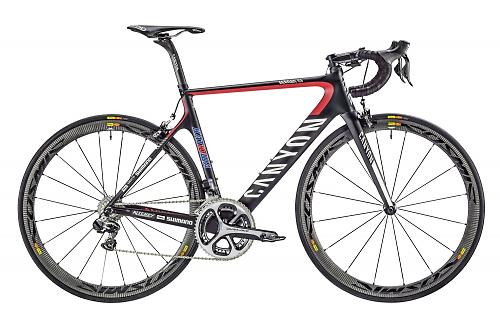
The Aeroad on the other hand was introduced back in 2011, which in the cycle industry is a looooong time. Needless to say, the frame profiles are clearly shaped to minimise drag, using a teardrop shape for the fork, down tube and seat tube. The seat clamp is hidden out of the airflow but the brake calipers are located in the regular positions. Cables of course are routed internally. If you compare it to the Speedmax below, you can see where the Aeroad could conceivably evolve if they were to launch an updated version.

For time trials, the futuristic looking Speedmax is the go-to choice. It looks incredibly fast just sat still doesn't it? Canyon put a lot of time and effort into this bike, with a 10-person team working on the aerodynamics and integration. The tube profiles are a step forward from the simple teardrop tubes of the Aeroad, and use a curved leading edge with an angular chopped-off tail. They call this Trident, but it’s similar in concept to the kamm tail used by some other manufacturers.

Integration is big in aerodynamics. If you can conceal as much of the mechanics and working parts inside the frame, you can reduce drag. That's the idea, anyway. The front of the bike is obviously a prime candidate, and here Canyon have designed a stem that is integrated into the top of the fork. It’s a common feature we’ve seen on many other time trial frames. It creates less frontal surface area, and creates a smooth and flat area from the front of the stem/fork section across the top tube.
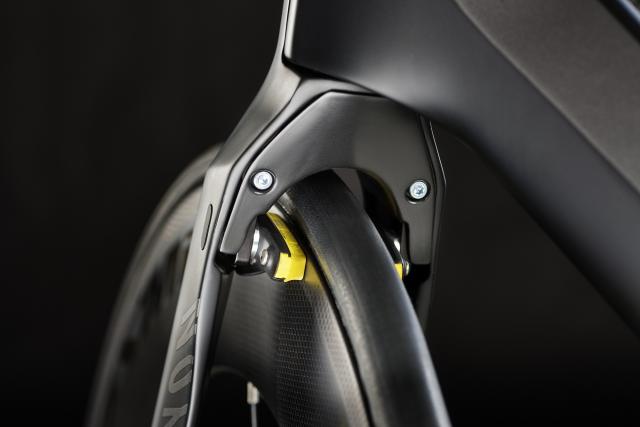
Canyon have developed their own centre-pull design brake calipers, the front is concealed behind the fork, and the rear brake virtually disappears down below the chainstays. The rear triangle is tiny, the top of the seat stays no higher than the front wheel, to reduce turbulence. The seat tube is also shaped with the Trident profile, and the top tube is very narrow and flat topped. A custom seatpost allows plenty of fore-aft adjustment. And of course, all cables or electronic wires are internally routed.
Unlike Movistar who equip their Canyon frames with Campagnolo parts, Katusha use Shimano Dura-Ace Di2 11-speed groupsets. Unlike many other Shimano sponsored teams who also get a wheel and finishing kit deal, Katusha use Mavic wheels and Ritchey finishing kit. Katusha have been using this Shimano/Mavic combination for a few years though. The use of Mavic wheels is only mirrored by Team Garmin-Sharp.
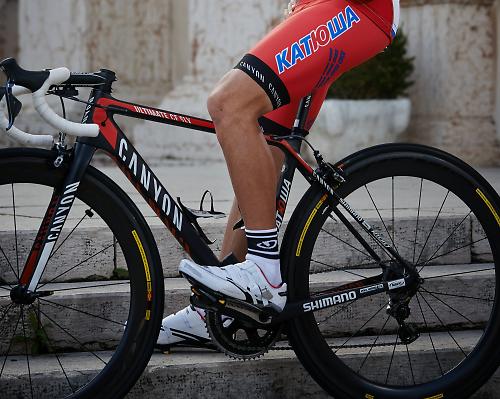
And yes, from the photos we've been sent, it looks like most of the team opt for negative rise stems to get the handlebars low enough. It's not like the Ultimate has a tall head tube, a 56cm size frame has a 15cm head tube which is definitely at the racier end of the scale for a frame of this size. The team are also sponsored by Selle Italia and the bikes pictured have the Flite fitted, a classic saddle.
David worked on the road.cc tech team from 2012-2020. Previously he was editor of Bikemagic.com and before that staff writer at RCUK. He's a seasoned cyclist of all disciplines, from road to mountain biking, touring to cyclo-cross, he only wishes he had time to ride them all. He's mildly competitive, though he'll never admit it, and is a frequent road racer but is too lazy to do really well. He currently resides in the Cotswolds, and you can now find him over on his own YouTube channel David Arthur - Just Ride Bikes.
Latest Comments
- Terry Hutt 4 hours 15 min ago
I assume you can carry an e-bike battery on the tube if you leave the bike at home. ...
- chrisonabike 5 hours 17 min ago
I love it - it's a roundabout with a sculpture of a roundabout on its desk!
- cmedred 5 hours 19 min ago
From the position of the cyclist when the video starts and the position of the bike later, it looks highly unlikely that the cyclist went "into the...
- Rendel Harris 5 hours 25 min ago
To rhyme with design. I wondered this myself so looked it up a while ago, according to the founder Micki Kozuschek he and his team had a few...
- Rendel Harris 6 hours 18 min ago
It's not being pedantic at all, careless driving is successfully prosecuted (and I have been in court more than once when a driver has been...
- HLaB 6 hours 41 min ago
It's hopefully an urban myth but I heard it was designed that way on purpose, so the cyclepath captured any flooding and the busway would remain clear
- mdavidford 6 hours 44 min ago
I should imagine eating chopsticks anywhere could be potentially rather perilous.
- Rendel Harris 7 hours 2 min ago
When The Badger stopped for protesters (albeit dockworkers rather than farmers) it was their stress gauges rather than his that would have been...
- Eurodolphin 7 hours 48 min ago
Having experienced a brain injury (while my helmet only suffered a little crack) I welcome all this excellent research which looks for ways to...
- mattw 7 hours 51 min ago
Nope. Has anyone ever bought a wheel trim studded with diamonds for their car? Thought not.







Add new comment
7 comments
The speedmax has always looked crazy fast. But I have to agree why on earth does Canyon not ship to the US???
Can someone please tell me why Canyon does not ship to USA? They ship to Somalia and everywhere in between but not USA? weird
The Speedmax!
Nice
The frame in that picture isn't even a 56cm, more like a 54cm probably so it's even shorter
15cm with negative rise?! Yes it looks mean, but crikey, I'd need about 40mm of spacers plus a traditional rise on the stem!
That Ultimate SLX looks mean with the negative-rise stem - WANT!!